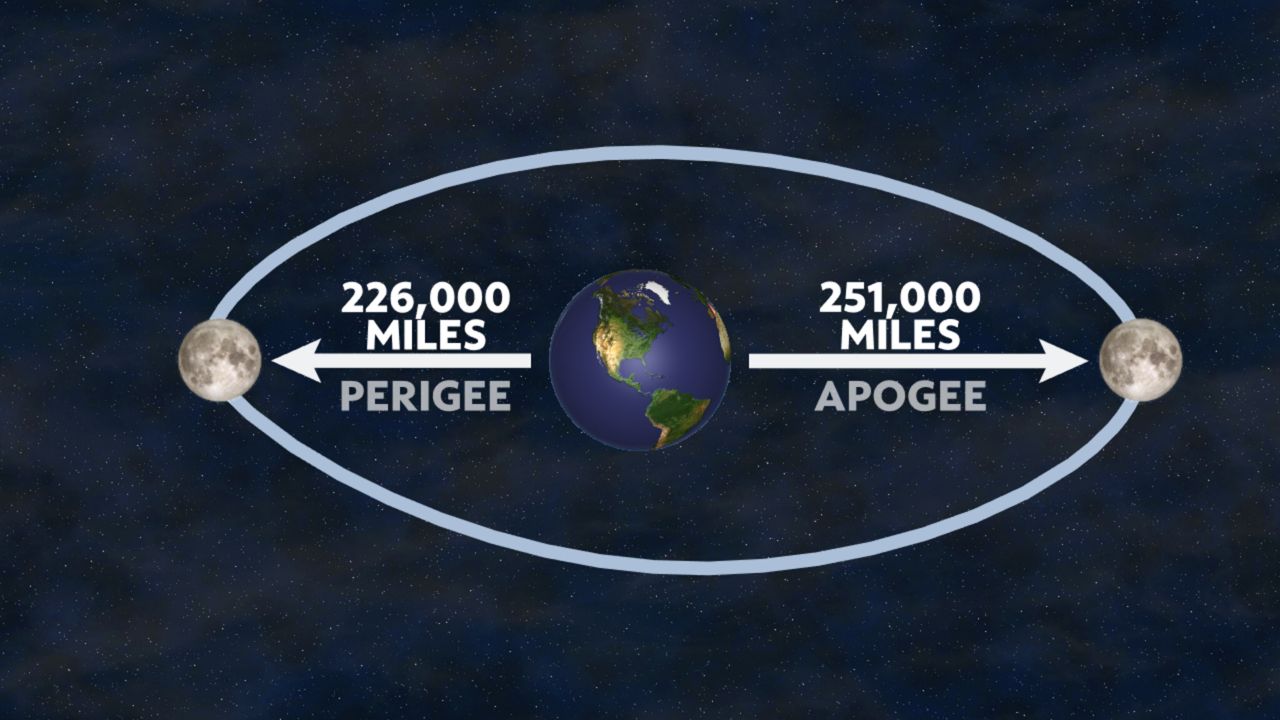Social media and news headlines go abuzz over things like blue moons and supermoons, but what do all those terms mean?
The common definition of a blue moon is the second full moon in a calendar month. But it turns out, that’s a surprisingly modern creation. Sky & Telescope has a great detective story on its origins.
So, what was the original “blue moon”? The Maine Farmers’ Almanac seems to have come up with the first version. In a season with four full moons, the third one was the “blue moon.” However, their seasons weren’t exactly easy to follow.
Blue moons–using the popular definition–happen about every two-and-a-half years.
“Supermoon” is another relatively recent word. It came about in 1979, according to NASA, and isn’t even an official astronomical term. But it’s stuck in recent years.
The moon’s orbit around the Earth isn’t a perfect circle. So, during the few months of the year when a full moon happens around its closest point–the perigee–the full moon is also called a supermoon. It’s about 226,000 miles away.

The moon’s apogee, or its farthest distance, is about 251,000 miles from Earth, says NASA. Some call the full moon during this time a “micromoon.”
But can you really tell a difference between the two? Since they’re not happening side-by-side, probably not. But you can pretend they are!
A lunar eclipse happens when the Earth is between the sun and a full moon, and the Earth’s shadow darkens the moon or even makes it look red. But wait, shouldn’t that happen every month?

The moon’s orbit around Earth is slightly tilted compared to the Earth’s orbit around the sun, so they’re not quite lined up. If they were, a lunar eclipse would happen every full moon (and a solar eclipse with every new moon). In a typical year, the orbits align closely enough to create two or three that are visible somewhere on Earth.
Unlike solar eclipses, you can safely look at a lunar eclipse with no eye protection.
Don’t know a waxing gibbous from a waning crescent? Learn all about the different phases of the moon.
Finally, the moon illusion. You might not have heard the term, but you’ve probably seen it. The moon sometimes appears larger as it’s rising or setting compared to when it’s high up, but its size doesn’t actually change. It’s all in our heads, and scientists have some ideas why it fools us, but still don’t know for sure.
Our team of meteorologists dives deep into the science of weather and breaks down timely weather data and information. To view more weather and climate stories, check out our weather blogs section.



